
Last Updated on
We’ve all come to take the increased capacity of our firearms for granted. High-capacity mags are sought after, and the demand for continuous shooting experience brought about the introduction of drum magazines. However, there is one group of firearms that can’t offer this benefit. In fact, the ability to shoot only once every reload is its most distinguishing feature. Single-shot firearms are designed to fire one projectile at a time and don’t have magazines or chambers to store more. Shotguns are the most popular guns in this group, though they are not the only ones. Single-shot shotguns have been a popular choice for hunters and sport shooters alike for over a century thanks to their simplicity and versatility. In this article, we will discuss the basic working principles of single-shot shotguns and their distinguishing characteristics and find out why their appeal hasn’t faded to this day.
Table of Contents
Introduction
Brief History
Types
Pros and Cons
Factors to Consider
Examples
Conclusion
FAQs
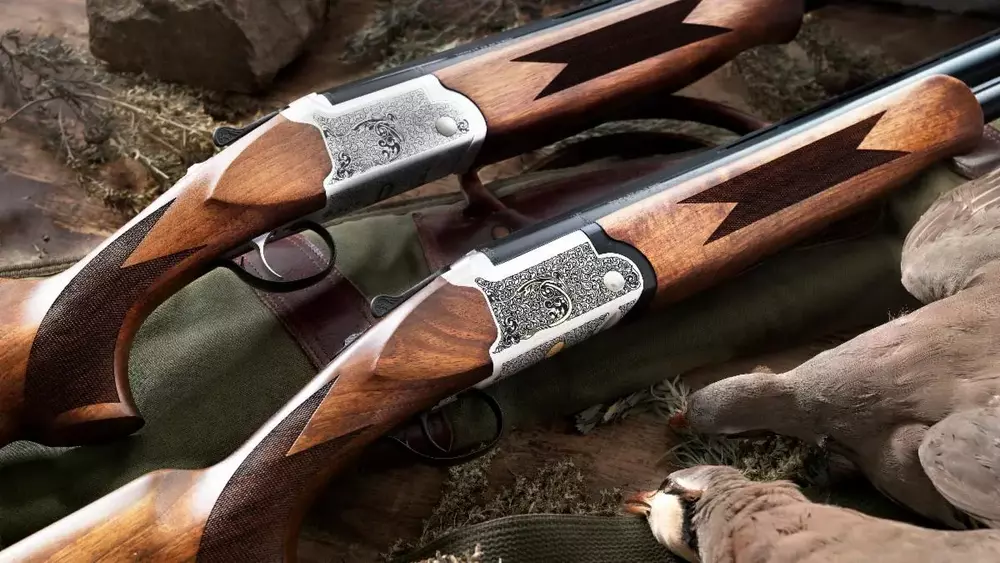
Introduction to Single-Shot Shotguns
Basic Working Principles
One could call single-shot shotguns the first stage of shotgun evolution, for their working principles are the simplest in the family. That, of course, doesn’t make them less effective. Such shotguns are loaded by inserting a shell into the chamber, which is then secured in place by a break-action or a hinge system. Once the shell is in place, the shooter cocks the hammer, takes aim, and pulls the trigger. The firing pin then strikes the primer on the shell, igniting the gunpowder, which in turn propels the shot out of the barrel. This is how the majority of firearms work, nothing too fancy here.
Distinguishing Characteristics
One of the most distinguishing characteristics of single-shot shotguns is their lack of a magazine. Single shots don’t have a place to store ammunition, that’s why they need to be reloaded after every shot, hence the name. They also have fewer moving parts than more sophisticated types of shotguns, such as semi-automatic or pump-action shotguns.
Another thing that makes them stand out is the barrel length. Single-shot shotguns typically have longer barrels than other types of shotguns, which is quite beneficial for accuracy. They are available in a variety of gauges, with the most common being 12 gauge, 20 gauge, and .410 bore.
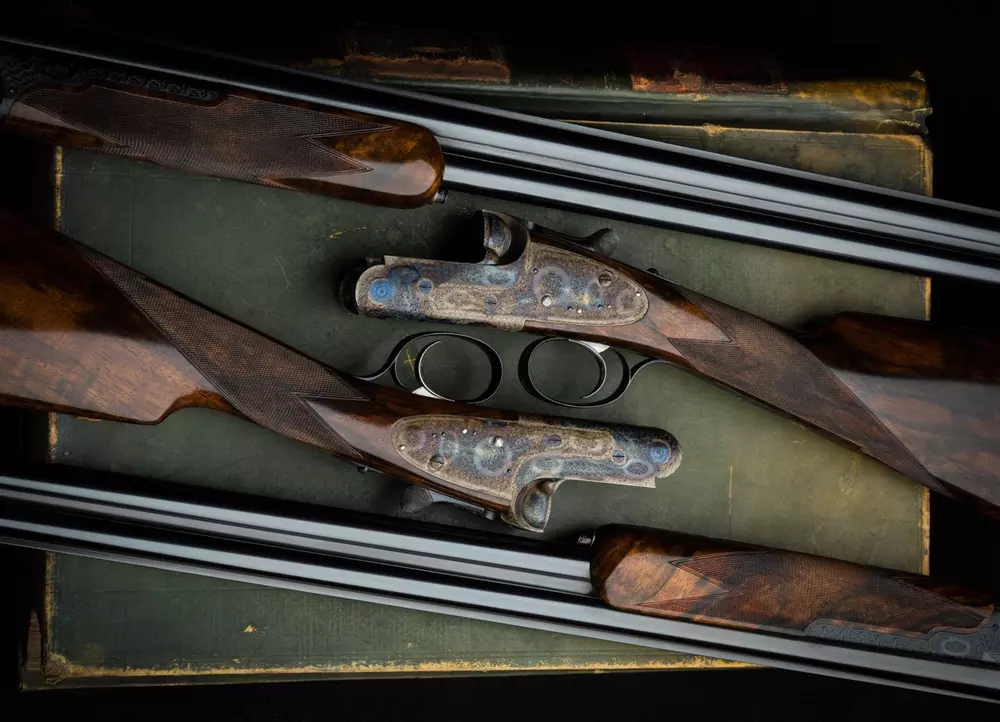
Brief History of Single-Shot Shotguns
Even though pump action shotguns seized the role of the “classic” shotgun in the public’s mind, things haven’t always been like that. In fact, for the biggest part of the shotgun’s history, breechloading single-shot was the most common type. The first single-shot shotgun appeared in the late 1800s and was widely used throughout the 20th century for hunting and sport shooting. Harrington & Richardson (H&R) produced their first single-shot in 1901 and later made a series of small-bore .410 single-shots. In the pre-WWI Wild West era, shotguns were referred to as “scatter guns”, nicknamed so because of the shot pattern. Winchester made the Model 37 from 1936 to 1963, selling over one million firearms. But even today single shot shotguns remain a popular choice, even though the market is much more varied than it used to be. They have become something of a status symbol, appealing to tradition and showcasing the owner’s appreciation of the classic firearms.
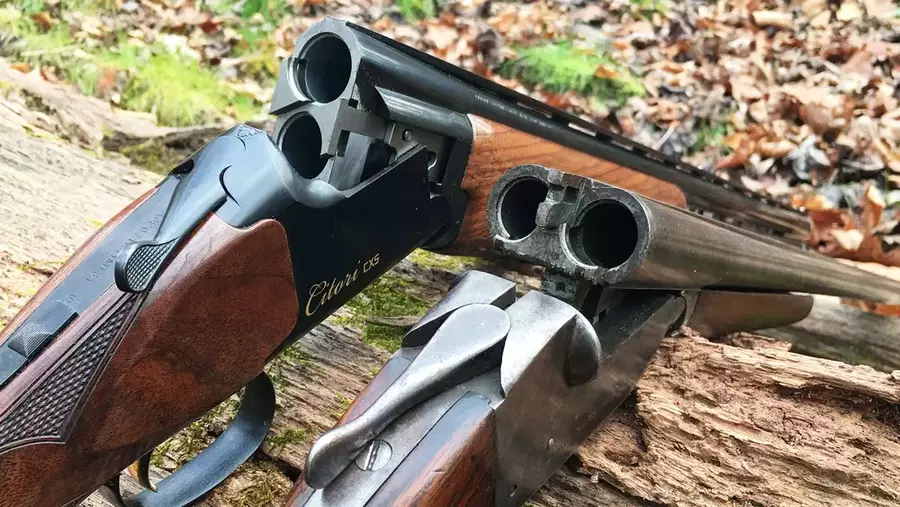
Types of Single-Shot Shotguns
Single-shot shotguns come in several different types, including side-by-side shotguns and over-and-under shotguns. There are also combination guns that can be attributed to the same group.
Side-by-Side Shotguns
Side-by-side shotguns, as the name suggests, have two barrels positioned beside each other horizontally. They are often used for upland game and bird hunting: their fast-swinging nature makes it easier to track moving targets. Side-by-side shotguns are also popular for clay pigeon shooting sports due to their quick pointability and ability to shoot two different choke constrictions in one gun.
Over-and-Under Shotguns
Over-and-under shotguns have two barrels that are stacked on top of each other. Sporting enthusiasts and competitive shooters use this type because of the precision and accuracy it allows for. The higher sighting plane of over-and-under shotguns makes it easier to aim and track moving targets. They are also well-suited for trap shooting where a longer barrel is preferred, as they can be heavier and longer than side-by-side shotguns.
Combination Guns
Combination guns are the hybrid type that comprises a smoothbore barrel and a rifle barrel in the same firearm. This allows hunters to switch between shooting game birds and taking larger game with a single firearm. Combination guns can be particularly useful for hunters who may encounter a variety of game species while out in the field, as they offer the ability to take a range of animals with a single gun.

Pros and Cons of Single-Shot Shotguns
Single-shot shotguns remain a popular choice for hunters and shooting enthusiasts for a variety of reasons. However, like any firearm, they have pros and cons that should be considered before making a purchase. Let’s take a look at some of the most significant pros and cons of single-shot shotguns:
Advantages:
- Simplicity: One of the biggest advantages of single shots. These firearms have fewer moving parts than other types of shotguns, which makes them easier to operate, clean and maintain. They are also less likely to malfunction (not that other types are very likely to, but this one has the fewest chances).
- Versatility: Single-shot shotguns are used for a wide range of activities, the most popular being hunting and clay pigeon shooting.
- Accuracy: Thanks to the smaller number of parts and lack of a magazine, single-shot shotguns are usually lightweight. Consequently, it’s easier to make more accurate shots than with other types of shotguns.
- Status Symbol: Single-shots are well-suited to be used by beginners, and many people proceed to other more modern types, like pump-action and semi-auto shotguns. But if somebody decides to stick to break-action shotguns, it usually means the person is a true shotgun connoisseur.
Disadvantages:
- Limited Capacity: As the name suggests, single-shot shotguns can only hold one shell at a time (two shells in case the shotgun has two barrels). It poses certain inconveniences, especially if you are trying to take down multiple targets quickly.
- Slow Reload Time: Single-shot shotguns require manual reloading after each shot. As such, they are not ideal for fast-paced shooting sports or situations where quick shots are necessary.
- Recoil: Single-shot shotguns tend to have more recoil than other types of shotguns. That happens both because of the lighter weight and because there is no mechanism that would work to decrease it.
Single-shot shotguns come in a wide price range. While it’s perfectly possible to find a shotgun that would fetch less than $200, there are also pricier models that mark shotgun aficionados.
It comes as no surprise that single-shot shotguns gained appreciators among both novice shooters and shooting experts. The former can benefit from the simplicity and ease of use. The latter can appreciate the challenge of having only one try. Such guns are also great for specialized hunting situations, such as turkey hunting.
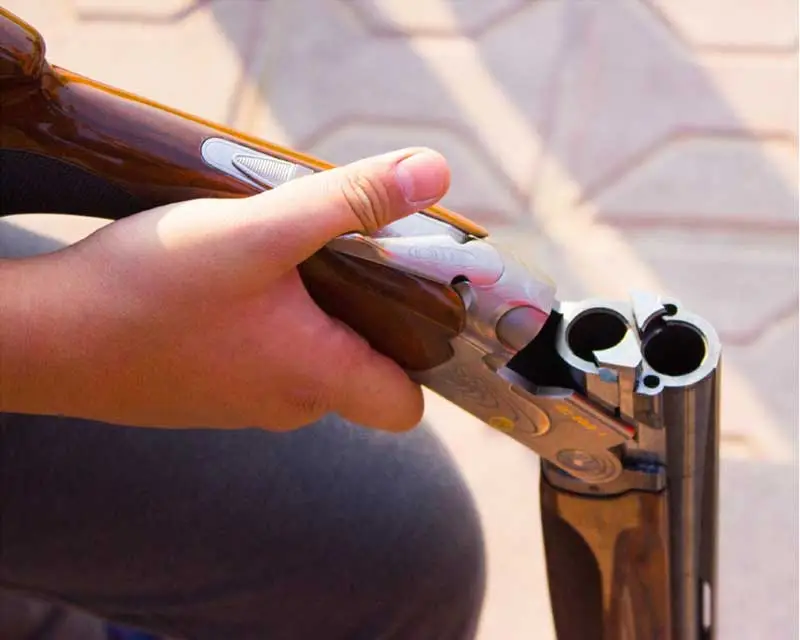
Factors to Consider When Choosing a Single-Shot Shotgun
When choosing a single-shot shotgun, several factors should be considered, including gauge, barrel length, and weight.
Gauge
The most common gauges for single-shot shotguns are 12 gauge and 20 gauge. For beginners, a .410-bore shotgun is recommended as it has the weakest recoil and is easier to handle. 12 gauge shotguns are more powerful and are ideal for hunting large game. The 20 gauge shotguns are the middle ground between the two and are suitable for upland and turkey hunting or recreational shooting.
Read: 12 Gauge vs. 20 Gauge: Choosing a Shotgun for Your Application
Barrel Length
The length of the barrel is another crucial factor to consider when selecting a single-shot shotgun. A longer barrel will provide better accuracy and recoil management, while a shorter barrel will be easier to maneuver in tight spaces and can be quicker to raise and aim. Barrel lengths for single-shot shotguns typically range from 18 to 32 inches.
Weight
The weight of the shotgun is another thing for consideration. A heavier shotgun will offer more stability and absorb recoil better, while a lighter shotgun will be more maneuverable and easier to carry. The weight of a single-shot shotgun can vary widely depending on the material used to construct it, barrel length and a plethora of other factors.
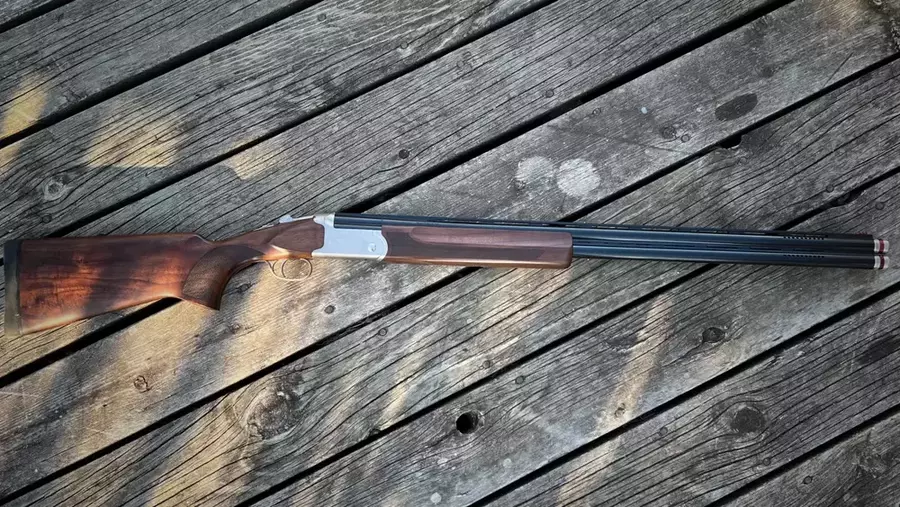
Examples of Single-Shot Shotguns
Savage 301 Single Shot Compact 20Ga
The Savage 301 Single Shot Compact 20Ga is one of those budget-friendly single-shot options we’ve mentioned previously. Lightweight and easy to use, it has quickly become a favorite among shotgun enthusiasts. This break-action single-shot has an overall length of 36″, weighs just over five pounds and is chambered for 20 gauge. The simplicity of its design makes it a nearly fail-proof choice, while the carbon steel barrel lives up to the harshest durability standards. The Savage 301 offers an excellent combination of performance and reliability, and the price is more than appealing.
CZ Sharp-Tail 12Ga
The CZ Sharp-Tail 12Ga is a side-by-side shotgun that has gained popularity among shooters due to its standard-setting performance and quality craftsmanship. Neither a budget gun nor a piece of luxury, it offers great value for the money and comes with a beautiful walnut stock and color case-hardened receiver. It has a break-action design and features a pistol-grip stock that makes operating the gun so much easier. The 12-gauge version is known for being a great shooter with manageable recoil.
Browning Citori Hunter Grade I 28 Ga
Now to the high-echelon firearms. The Browning Citori Hunter Grade I is a top-of-the-line over-and-under shotgun that is built with the sleek design and precision craftsmanship you won’t find in cheaper shotguns. Its Grade I walnut stock, fine checkering, and elegant engraving make it both visually stunning and incredibly functional. With its proven mechanical design and customizable options, this shotgun is ideal for the serious hunter or shooter who demands nothing but the best in accuracy and performance. It will fetch you a pretty penny, but if you are looking for the one single-shot shotgun, this candidate has all the merits and virtues of a companion, worthy to accompany you wherever you go.
Conclusion
As you can see, the appeal of single-shot shotguns hasn’t faded with time, even if brighter stars have appeared in the sky. The simplicity and versatility these shotguns offer make them a great choice for those who enjoy hunting or shooting activities. Whether you’re hunting small game with a 20 gauge or shooting clay pigeons or big game with a 12 gauge, a single-shot shotgun may be just the firearm you need.
Check out our other articles on shotguns:
- 7 Best Home Defense Tactical Shotguns – 2023 Guide
- Mossberg Shotgun Reviews: From Pump-Action to Semi-Auto
- 12 Gauge vs. 20 Gauge: Choosing a Shotgun for Your Application
FAQs
What makes single-shot shotguns a good choice for beginners?
Single-shot shotguns are a great choice for beginners because they are simple and easy to use. With only one shot, they force the shooter to focus on accuracy and make every shot count.
Are single-shot shotguns suitable for hunting and home-defense?
While single-shot shotguns can be are often used for hunting, they make for a really poor choice for home defense. In such high-stress situation as a home intruder, you want to have several tries at landing a shot. Single-shot shotguns don’t allow for it.
How do single-shot shotguns compare to other types of shotguns in terms of accuracy and recoil?
Accuracy is in the eye of the shooter, so holding a single-shot shotgun won’t make you more accurate than you usually are. They are, however, known for their increased recoil, because they are generally lighter and don’t have any mechanism that would counteract recoil.
Can I use a single-shot shotgun for trap or skeet shooting?
Yes, single-shot shotguns can be and should be used for trap or skeet shooting. That’s one of the things they excel at. However, if it’s speed shooting with multiple targets, you might be better of with a semi-auto shotgun.




Leave a Reply